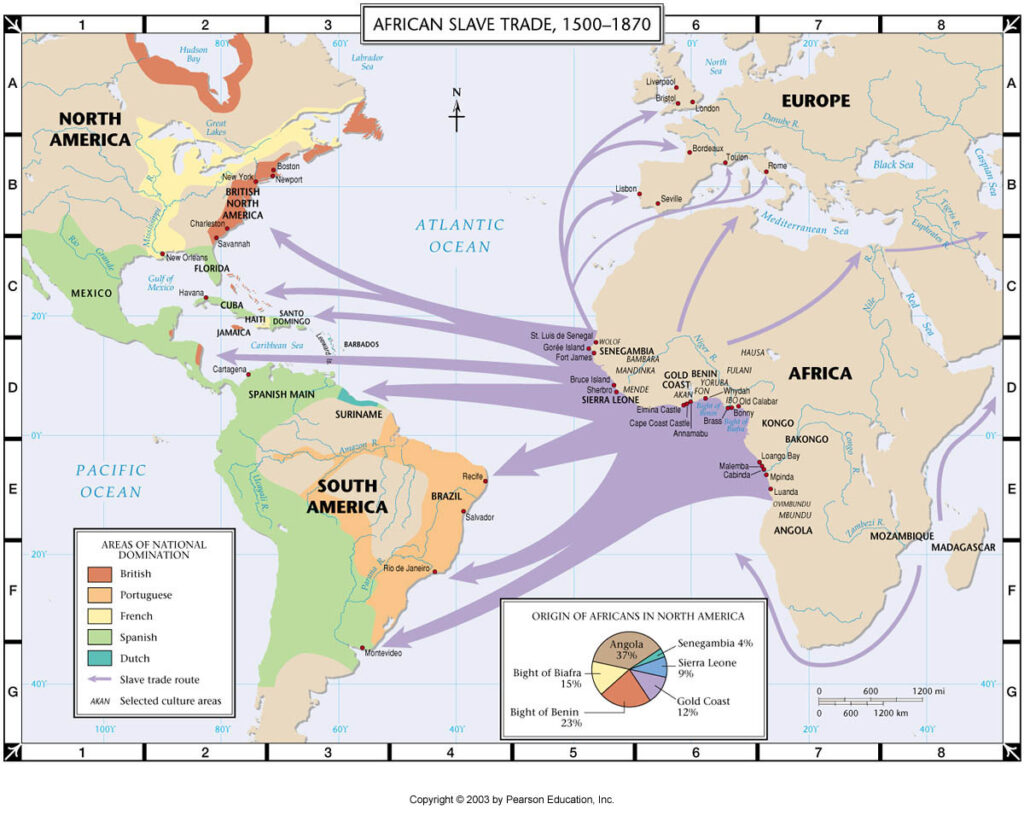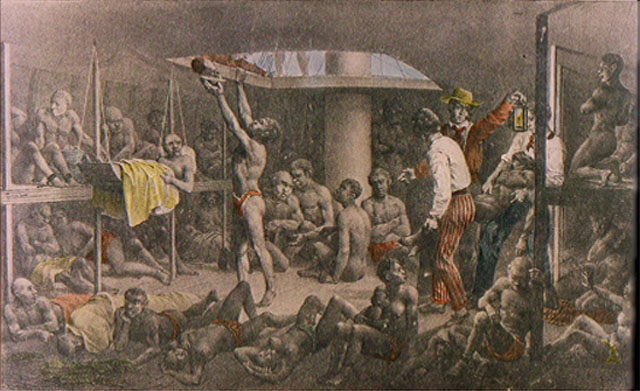

 During the 1500s Pedro Alvares Cabral arrived in Brazil directly from Portugal. Similar to Columbus in North America, you had a case where “whites” stated that they discovered and then declared a land that was already inhabited by it’s native people. Colonists tried to enslave Brazilian natives in the beginning, but this quickly proved too difficult for many reasons, including the familiarity natives had with the land, which allowed them to escape and survive outside the settlements. The solution was importing enslaved Africans. Portugal shipped slaves into South America from West Africa. 42% of all the slaves shipped across the Atlantic ended up in Brazil.
During the 1500s Pedro Alvares Cabral arrived in Brazil directly from Portugal. Similar to Columbus in North America, you had a case where “whites” stated that they discovered and then declared a land that was already inhabited by it’s native people. Colonists tried to enslave Brazilian natives in the beginning, but this quickly proved too difficult for many reasons, including the familiarity natives had with the land, which allowed them to escape and survive outside the settlements. The solution was importing enslaved Africans. Portugal shipped slaves into South America from West Africa. 42% of all the slaves shipped across the Atlantic ended up in Brazil.
The Atlantic slave trade was a massive enterprise with tentacles that reached everywhere in the Americas, from Boston to Buenos Aires. But its center was the Portuguese colony of Brazil: For every African who landed in British North America, 12 arrived in Brazil, most of them destined for gold mines and sugar plantations, brutal work that killed a third to half of them within five years.
Almost as soon as they were put to work, the slaves began slipping out of their masters control and started to escape the harsh conditions of the European plantations and mining operations and headed for the country’s interior, into lands controlled by native “Indians”. Protected by a labyrinth of rivers and impenetrable forest, these illicit settlements endured for decades, even centuries.

